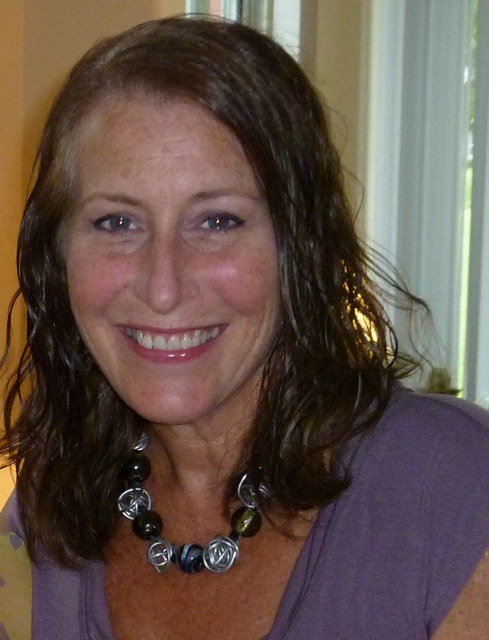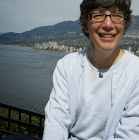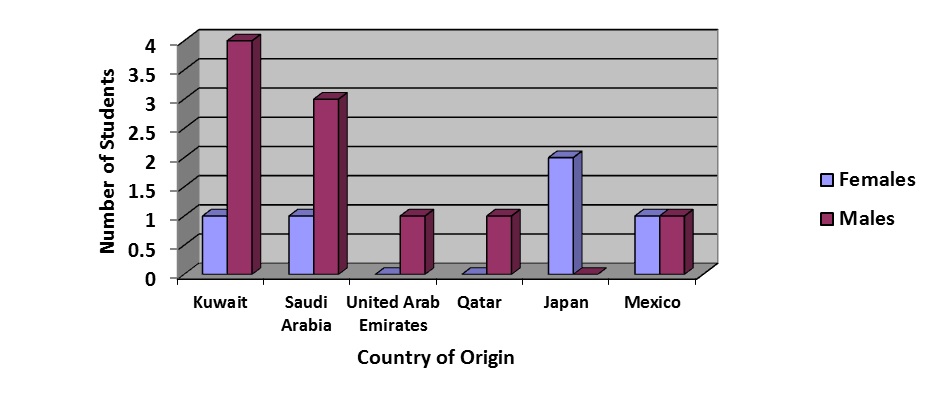|

Catherine DeGaytan
Arizona State University, Tempe, Arizona, USA
|
|

Mark DeGaytan
Arizona State University, Tempe, Arizona, USA
|
|

Norma L. Gorham
English Language Specialist and Consultant, Rochester, Washington, USA
| Women hold up half the sky. According to
this Chinese proverb, without women, the sky will fall down. Based on
the fact that women are crucial for society and the idea that women are
not the problem but the solution for certain social issues, Nicholas D.
Kristof, a New York Times journalist, and Sheryl
WuDunn, his wife, spent years traveling to different countries talking
with women to hear their stories of oppression firsthand and talking
with people who are trying to help them. The result of their travels and
inspirational interviews is the best-selling book entitled Half the Sky: Turning Oppression into Opportunity for Women
Worldwide (2009).
The PBS documentary mini-series of the same title (2012) makes
viewers aware of social issues affecting women in six different
countries and teaches the importance of social responsibility to
implement changes for the better. Classroom module videos adapted from
the documentary (2012) are the springboard for engaging, collaborative
activities that help advanced ESL students improve their listening and
speaking skills while learning about women’s social issues. Pairs (or
groups) of students are assigned one video, focusing on one social issue
in a country and featuring a female celebrity activist, and become the
“experts” on that issue not only by watching the video and learning key
vocabulary but also by doing additional research on the issue in the
country assigned to them.
Following are the six women’s issues with the featured celebrity activists in parentheses:
- Gender-based violence in Sierra Leone (Eva Mendes)
- Sex trafficking in Cambodia (Meg Ryan)
- Economic empowerment in Kenya (Olivia Wilde)
- Maternal mortality in Somaliland (Diane Lane)
- Education in Vietnam (Gabrielle Union)
- Intergenerational prostitution in India (America Ferrara)
The culminating activity of the Half the Sky
project is an interactive poster session to teach Americans and ESL
students from other invited classes about the women’s issues in the six
countries and the importance of social responsibility.
Class Background Information
ESL students in an advanced Listening/Speaking class at a
university intensive English program participated in the Half
the Sky project. There were 15 students in the class: five
females and ten males.

Figure 1: Class composition.
The class met seven and a half hours per week (six 75-minute
periods) in an eight-week course. The six steps below were followed in
the Half the Sky project. The project required five
class periods in addition to time outside of the class for students to
collaborate with partners.
Step 1: Introduction to the Half the Sky Project
Before introducing the project, students answer the
question—What does social responsibility mean to you?—in an audio
recording during the first week of class. It is important for the
students to have a couple of weeks to build a strong rapport before
beginning the project because of its sensitive issues. It is equally
important for the teacher to have ample time to determine which students
will work best together on which social issue and whether the students
have the English ability, maturity, and collaborative skills needed for
the success of the project.
In the third week of the course, students in small groups
discuss the meaning of social responsibility and the Chinese
proverb—Women hold up half the sky. After a class
wrap-up, introduce the project by showing the book entitled Half the Sky: Turning Oppression into Opportunity for Women
Worldwide, giving background information about the authors and
the book, and viewing the short trailer for the PBS
documentary [Time 2:40] with the sole listening task of noting
the six women’s social issues mentioned.
Elicit the social issues mentioned in the trailer and the
meaning of each issue. Explain the project further, and assign an issue
to a pair (or group) of students. Show the Symbaloo
webmix, which can be put on the learning management system for
easier access, and describe how it is organized. The webmix houses six
tiles, or links, for each issue: a map of the region, a map of the
country, a Quizlet with key vocabulary in the Half the
Sky classroom module video, a written summary of the video
content, and an interview with the celebrity activist.
Pairs access the webmix on their phones or laptops to view
the two maps and the Quizlet. After the pairs have completed the three
pre-viewing tasks, they watch the video (approximately 10 minutes) one
time. While watching the video a second time, they take notes on the
problem (the social issue) and the solution (the organization targeting
that particular social issue).
In each video, Kristof and the celebrity activist interact with
women and girls and hear their stories of oppression firsthand. They
also interview the people working at the organization that is trying to
help these women and girls. Although the women’s social issues are
critical and seem depressing, the people and organizations determined to
help the affected women and girls cast an overwhelmingly hopeful light
on dark issues. While the majority of our students were shocked because
they had been unaware of the existence of these serious problems, they
felt that the solutions were hopeful and uplifting. We were affected by
the concern and compassion that our students exhibited after watching
their assigned video.
Step 2: Researching the Issue: The Problem and the Solution
After students have viewed the video again outside of class,
check each pair’s understanding of the problem and the solution. Pairs
use the other links on the Symbaloo webmix—the summary of the video and
the interview with the celebrity activist— to gather more information
about the problem and the solution. The teacher guides each pair in
searching for additional information about the problem and/or the
solution needed to become the “experts.” For example, the teacher might
suggest researching the civil war in Cambodia to have a better
understanding of the problem of sex trafficking. Another suggestion
might be to visit the website Room to Read, an organization promoting
literacy for girls in Vietnam, to learn more details about the
organization as well as why John Wood, its founder, left his executive
position at Microsoft. Pairs are required to have at least three sources
for their poster, one of which is the video.
Step 3: Preparing the Poster
Show a PowerPoint
slide that gives instruction on making an effective
problem/solution poster and share sample posters. In
addition, give tips on delivering an effective poster presentation.
Pairs decide how they want to showcase the problem and solution and
decide how to lay out the text and visuals on a tri-fold poster board.
They also prepare a Works Cited page or References to be included on
the poster.
Step 4: The Poster Session
Collect all six posters from the pairs. Set up the initial
three posters, along with video cameras, in different parts of the room.
Welcome the guests—Americans and ESL students from other invited
classes—and explain the Half the Sky project and its
purpose. Divide the guests so that there is a relatively equal number at
each of the three posters. The time allotted for the poster session is
one hour: the initial group of three posters is exhibited for 30
minutes, and then the final group of three posters is exhibited for 30
minutes. Each pair has 10 minutes to present the information on the
poster and to answer questions from the audience members. Ring a bell
after 10 minutes to have the guests rotate to the next poster. Continue
the same procedure for the third poster. After 30 minutes for the
initial group of posters, the same procedure is followed when the final
three posters are set up. Students who are not presenting and student
guests take notes during the poster presentations, using a
problem/solution graphic
organizer.
Step 5: Assessment
Students watch their videotaped presentations and complete an audio recorded
self-evaluation and a written reflection.
Evaluate each pair’s presentation (criteria can include teamwork, the
poster, language use, and delivery skills/interaction with the
audience.).
Step 6: Watching the Other Half the Sky Videos
Students access the Quizlets with key vocabulary on the
Symbaloo webmix, and have them review their graphic organizers, which
serve as scaffolding, before watching the other videos via the Symbaloo
webmix. In class, students in small groups discuss their reactions to
the women’s social issues and what they learned about social
responsibility from the poster session and all the videos.
Conclusion
The students’ reflections on the Half the
Sky project were overwhelmingly positive. The students enjoy
using technology—the Symbaloo webmix and internet sites for research;
collaborating with their partners; having creativity and freedom in
designing their posters; improving their listening and speaking skills;
and, most importantly, being the “experts” who teach others what they
have learned. The trailer shown in the introduction to the project (Step
1) makes a call for action—to “engage, motivate, educate, and join the
movement.” Our students did just that, making the Half the
Sky project a huge success.
References
Chermayeff, M. (Executive Producer & Director), Beardsley M., & Gordon, J. (Executive Producers). (2012). Half the sky: Turning oppression into opportunity for women worldwide [Documentary]. U.S.: Show of Force, LLC and Fugitive Films, LCC.
DeGaytan, C. (2014). Half the sky [Website]. Retrieved from http://www.symbaloo.com/mix/halfthesky
(included in Step 1).
Kristof, N.D., & WuDunn, S. (2009). Half the
sky: Turning oppression into opportunity for women worldwide. New York: Vintage Books.
NOTE: This article has been copy edited by the SRIS Chair, due to its length.
Catherine DeGaytan teaches at the intensive English program at
Arizona State University in Tempe, Arizona. She has been teaching for
more than 25 years and has taught in Saudi Arabia and Egypt in addition
to the U.S. Catherine’s professional interests include pronunciation
instruction and projects focusing on social responsibility.
Mark DeGaytan teaches at the intensive English program at
Arizona State University. He has also taught at intensive English
programs in Texas, Alabama, Michigan, and Delaware. Mark’s overseas
teaching experience includes working at intensive programs in Saudi
Arabia and Egypt. His professional interest is creating engaging tasks
and activities based on videos.
Norma L. Gorham is an English Language Specialist and
Consultant specializing in English for Academic Purposes. During the
past 15 years, she has taught English to students between the ages of 3
and 80 from the far reaches of the Aleutian Chain to the metropolitan
buzz of Taichung, Taiwan. Likewise, she has studied geology with
community elders in remote Alaska as well as attended workshops by
expert linguists in downtown Ankara. Her passion is education be it
teaching or learning. | 
